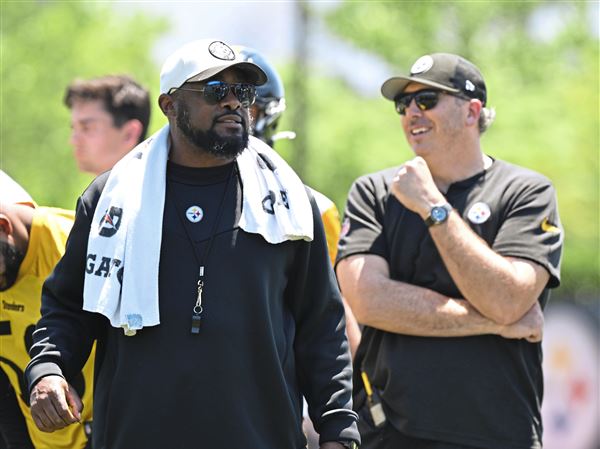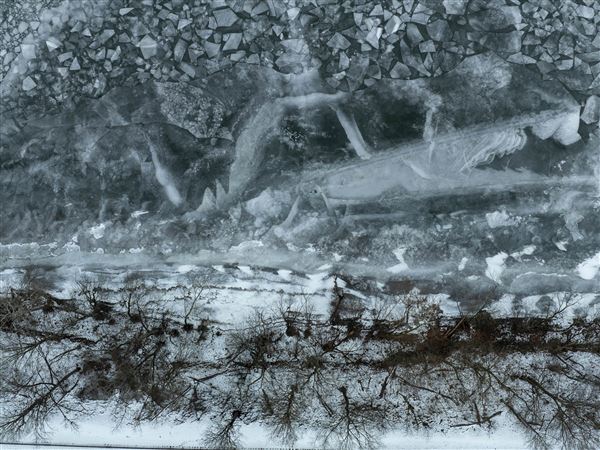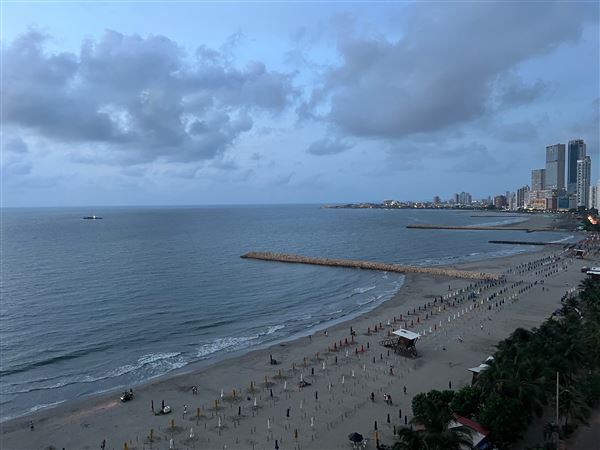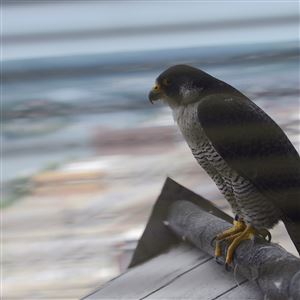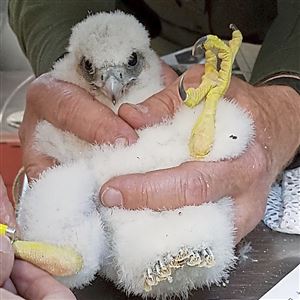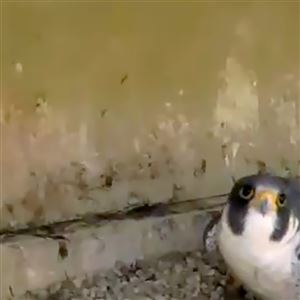More drama has occurred on a ledge at the Cathedral of Learning. The resident peregrine falcon had eggs for breakfast. Her own.
Since last month the mother bird has been incubating four eggs at the University of Pittsburgh nesting site. On Tuesday morning, a live-streaming video camera recorded pips, or pecking from within two of the eggs signaling their impending hatching. But by 9 a.m. the mother had killed and eaten both hatchlings as they attempted to emerge from the eggs. Two unhatched eggs remained in the nest.
"We don't know why she does it," said Kate St. John, creator and operator of the Outside My Window blog, which focuses on Pittsburgh’s peregrines and the natural world. "It's a relatively rare occurrence, but it hasn’t been for her."
Three urban peregrine nesting sites are monitored by cameras in Pennsylvania. One is on the 15th floor of the Rachel Carson State Office Building in Harrisburg. Another on Pittsburgh’s Gulf Tower is not occupied this year. The activities at the Cathedral of Learning site, surveilled by the National Aviary on the North Side, have unfolded like a TV soap opera for birds.
A strong-willed female that watchers called Dorothy literally ruled the roost at Pitt for 17 years, quite long by peregrine standards. Following her death, Hope, as watchers call the current female, left her previous unmonitored site at the Tarentum Bridge and took over in Oakland in 2015. Dorothy’s mate remained with the nest after Hope arrived.
In the spring of 2016 Hope became pregnant, but before the eggs were hatched her mate died in a traffic accident in Friendship. Hope soon captured the attention of peregrine watchers worldwide. Some were horrified.
“Her first egg hatched and the hatchling was raised normally,” said F. Arthur McMorris, peregrine falcon coordinator with the state Game Commission, the state agency charged with managing birds and terrestrial wildlife. “The second was eaten as it was hatching. The third egg hatched but it was not doing well. It died on its own within a day or two and she fed it to her surviving young. The fourth was killed as it was hatching.”
In 2017 the mother laid four eggs. She killed and ate the first nestling as it was hatching.
“We all said, oh no, it’s happening again,” said Mr. McMorris. “But eggs Numbers 2, 3 and 4 hatched perfectly normally and all fledged, and we breathed a sigh of relief.”
With today’s cannibalistic behavior, Ms. St. John said it has become accepted that “this is what [Hope] does. It doesn’t seem to be aberrant for her. This is part of nature.”
Ms. St. John said similar activities were previously documented at two peregrine nest sites, one on a natural cliff face. Nevertheless, said Mr. McMorris, avian biologists cannot explain it.
“One possibility — and this is hypothetical — is that this adult female can detect something wrong with those hatchlings that we can’t detect. This is her way of getting rid of them,” he said. “If she doesn’t kill them immediately on hatching, she’s a good mother. Four of her hatchlings, one from 2016 and three from 2017, were raised normally and fledged.”
As if Hope knew she was on camera today, she turned her back to wildlife watchers while killing and eating the nestlings. To avoid upsetting some viewers, Ms. St. John posted a warning on her blog.
“A caution to viewers,” it stated. “Don't watch the eggs hatch at the Cathedral of Learning if it upsets you to see a mother kill her young. I'll let you know when the coast is clear.”
To access Outside My Window go to www.birdsoutsidemywindow.org. The National Aviary peregrine cam is at www.aviary.org/PF-Nestcam1.
John Hayes: 412-263-1991, jhayes@post-gazette.com.s remain in the nest.
First Published: April 17, 2018, 4:31 p.m.
